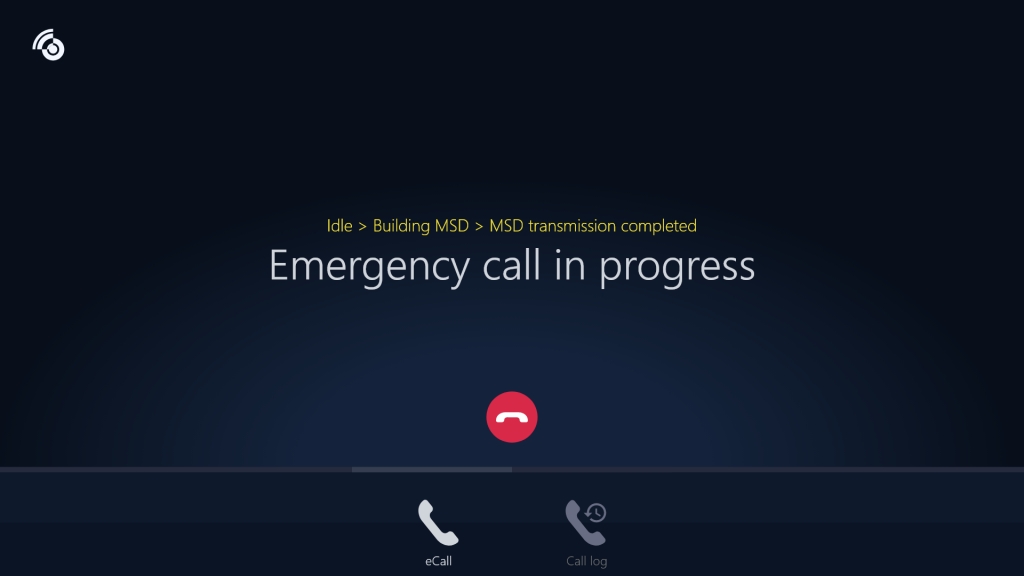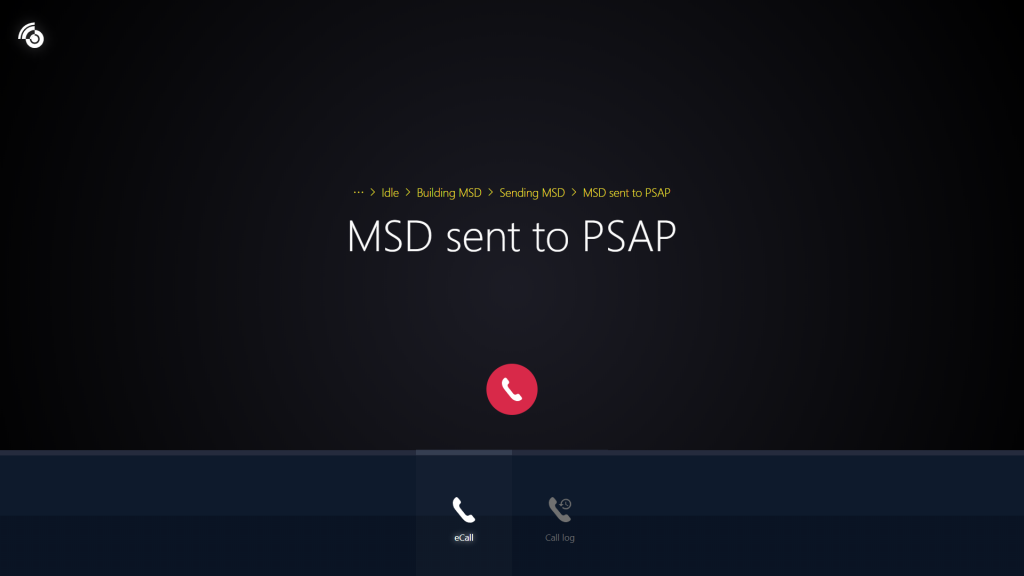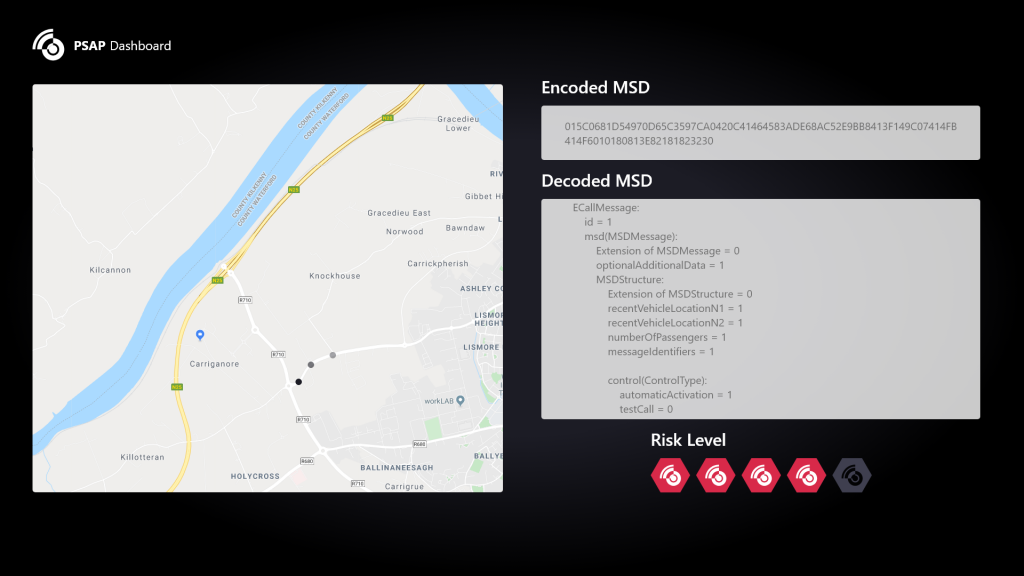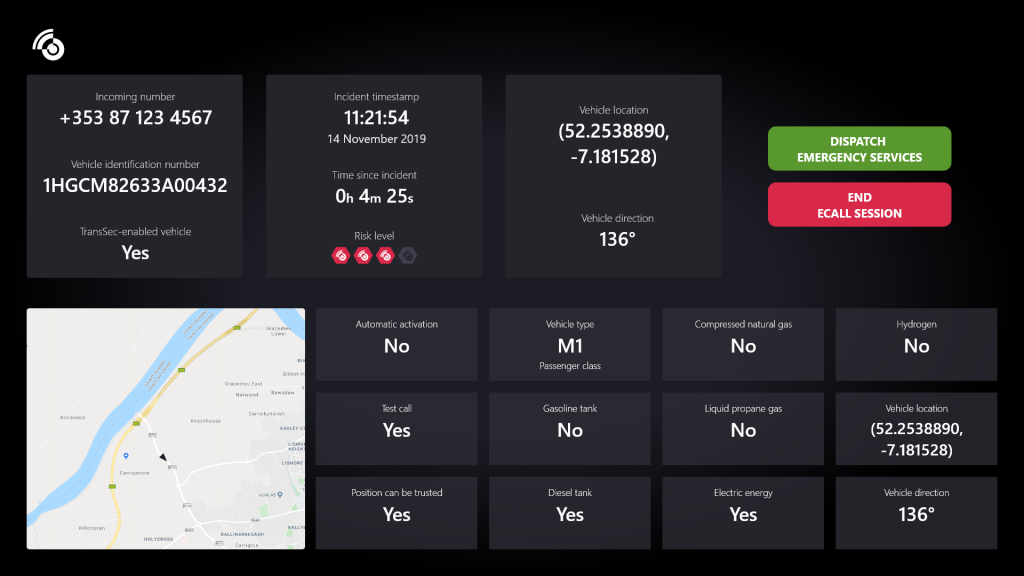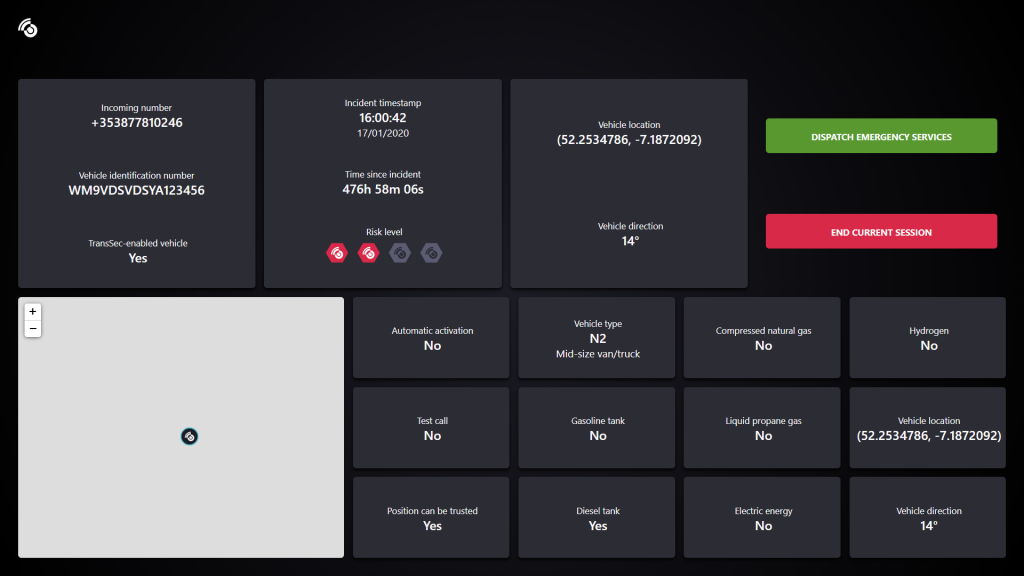The second year of TransSec is now complete, and with that comes the completion of the alert/eCall demonstrator. This post discusses eCall in general and its role in TransSec, along with the thinking behind its specific implementation within the project.
One of the major elements of TransSec is the support for the pan-European emergency call (eCall) standard, which, up until this point, has been focused towards smaller, domestic vehicles and on post-crash situations. The goal of the eCall service is to lower the time between the occurrence of a roadside incident and the response of emergency services to that incident.
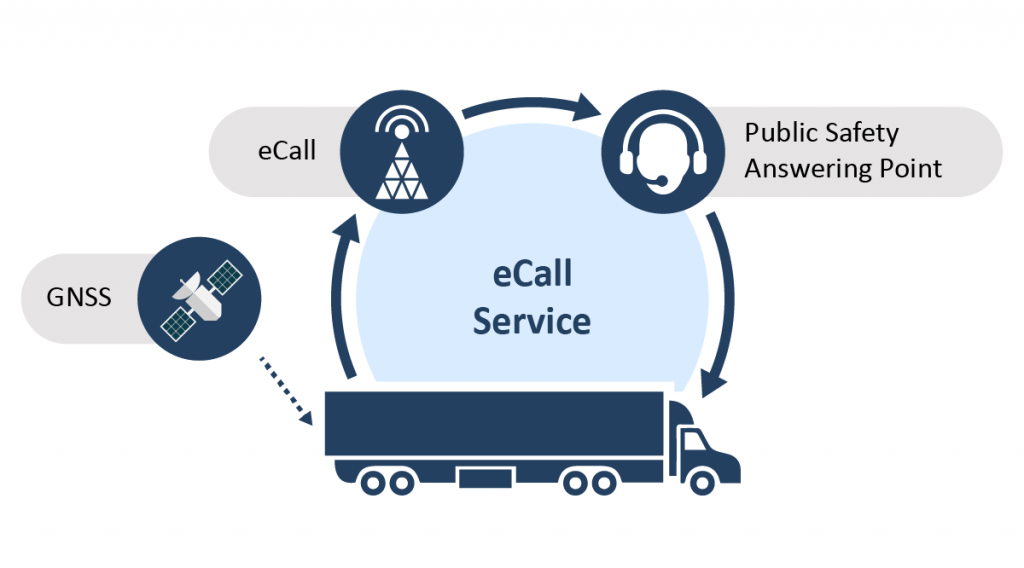
A standard European eCall is formed by two elements: a voice component, and a data component. The voice component involves vehicle occupants speaking to operators at a public safety answering point (PSAP), while the data component is a transmission of vehicular data to the PSAP.
Additionally, under pan-European eCall, there are two trigger mechanisms for eCall: automatic and manual. An automatic eCall would be triggered in such situations where in-vehicle sensors detect a crash or other roadside incident involving the vehicle. In contrast, a manual eCall is triggered by a vehicle occupant in any other situation where assistance from emergency services is required (ill/injured occupant, etc.)
eCall for TransSec
Implementation of an eCall system to fit TransSec presented a number of challenges. Primarily, the objective of TransSec is to prevent the misuse of heavy-goods vehicles. This means that when an emergency call is to be triggered via TransSec, it is possible that the driver of the vehicle intends to cause harm to others using that vehicle. Such a situation would make the voice component of an emergency call problematic, as the driver of the vehicle may not necessarily be trustworthy, thereby downplaying a dangerous situation while in conversation with a PSAP operator, leading to lack of emergency response.
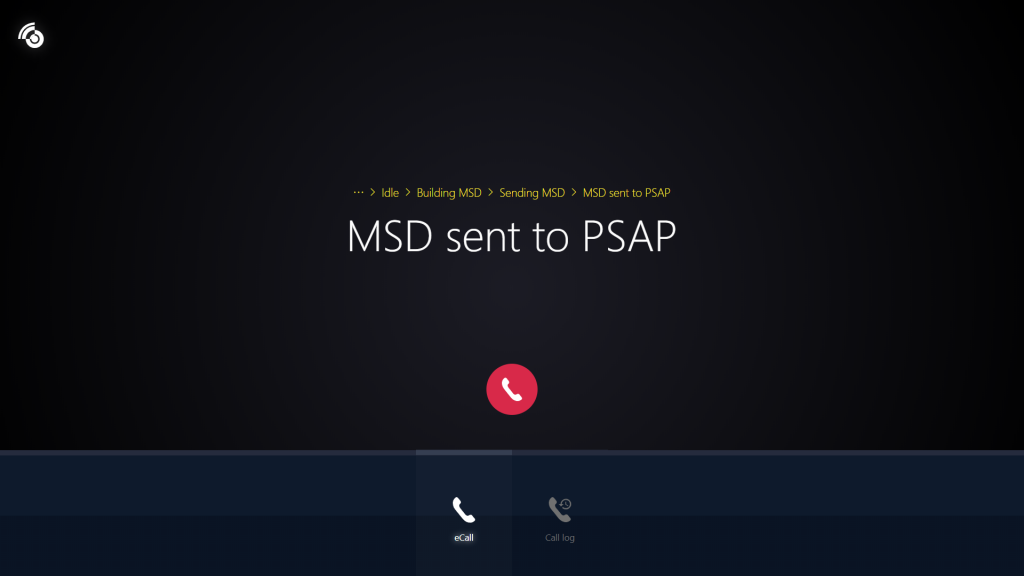
For this reason, it was decided that TransSec eCall will not include a voice call component. The innovative eCall solution we have built is a direct reflection of the project’s overall goals.
The custom eCall implementation for TransSec is a primarily-automatic eCall triggering mechanism activated by on-board systems designed to calculate the risk of a roadside incident.
Upon determining a valid risk of an incident occurring, TransSec’s array of on-board sensor systems communicate to the eCall hardware to send an eCall message to a PSAP and alert emergency services.
Once a trigger has been received by the eCall device, collection and encoding of data begins. TransSec is compliant with the eCall Minimum Set of Data (MSD) set down by CEN EN 15722, and includes all required information (such as vehicle location, vehicle identification number, timestamp, etc.), encoded using ASN.1 unaligned packed encoding rules (UPER). This data is transmitted directly to a Public Safety Answering Point, from where the required emergency services can be dispatched.
The hardware & software
The TransSec eCall system uses commercial off-the-shelf components to build an eCall device which fits seamlessly into the TransSec ecosystem, allowing for other components of TransSec to easily communicate with the eCall device to trigger any required alerts.
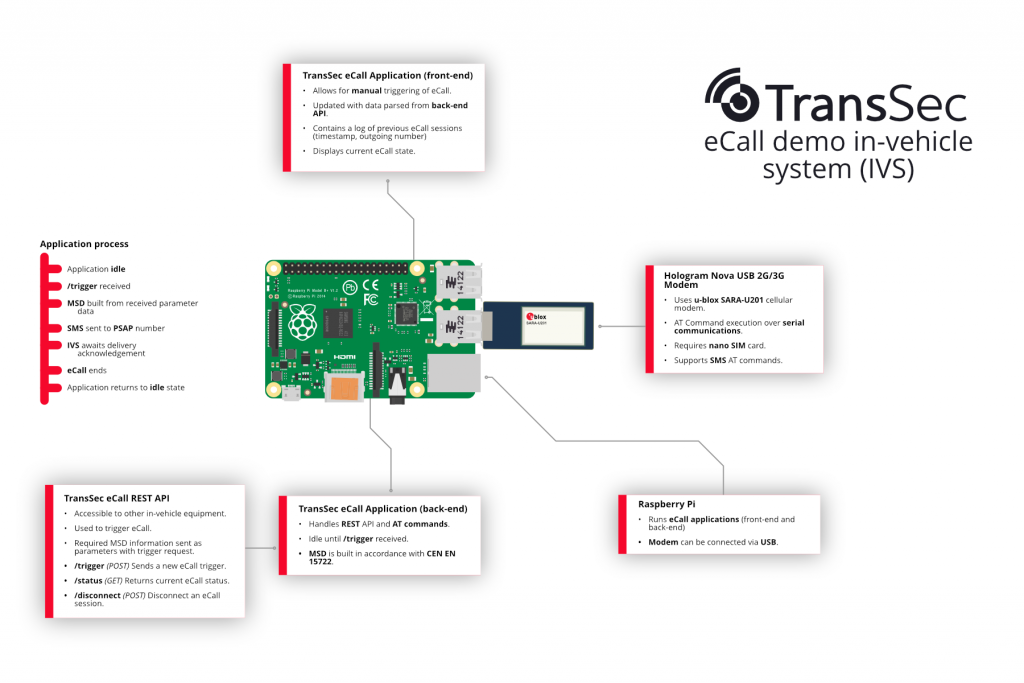
The hardware for the in-vehicle system (IVS) is comprised of a Raspberry Pi, with a connected USB modem for data communications and a 7-inch touch screen for user interface and interaction with the eCall application.
We have developed a full software package for the eCall in-vehicle system which handles the management of emergency call sessions, whether automatic or manually triggered via the user interface.
For the purpose of demonstrator testing, a PSAP simulator was also built to aid in monitoring eCall message transmission and data validation.
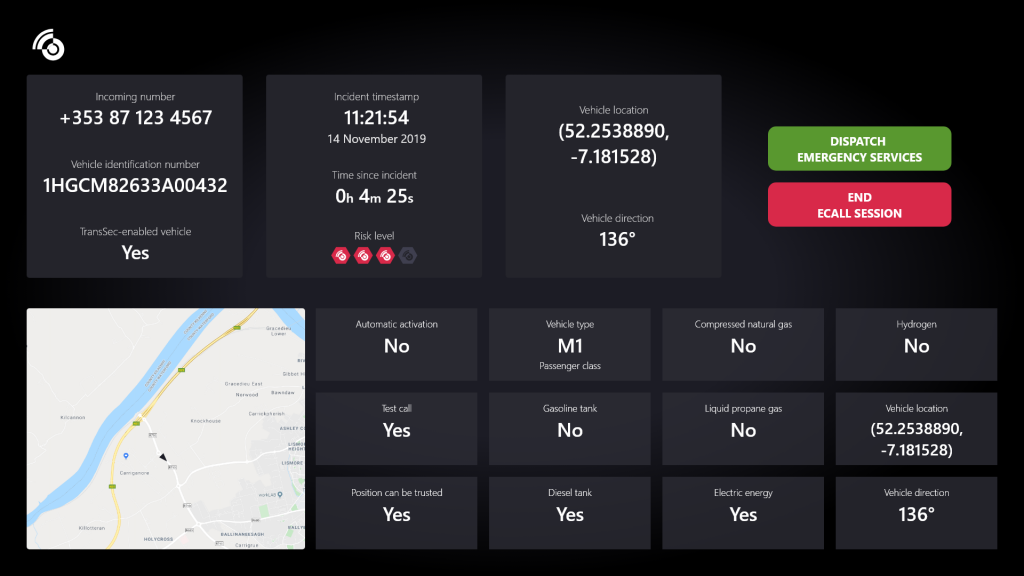
The PSAP simulator is used to decode and display any incoming eCall MSD messages. This tool was primarily used to verify that any MSD encoding done prior to message transmission was in line with the standard eCall Minimum Set of Data.
Interface design
The IVS and PSAP application interfaces were designed with the primary goal being to offer easy access to the required functionality and information. Both applications went through several design iterations.
As can be seen above, simplicity was at the core of the IVS application interface design. The IVS will naturally be housed in-vehicle, so all of its functionality needed to be accessible at a glance with limits on the amount of required interactions.
Wrap-up
eCall is a major feature in the push towards increased road safety, and TransSec fully embraces the system with our own spin on emergency call, customised to fit the goals of the project.
The innovative pre-crash eCall system helps to add an extra layer of safety and security to TransSec, and will be seamlessly integrated into the overall package to aid in achieving our goal of enhanced road transport security and to stop the misuse of heavy-goods vehicles on the road.




